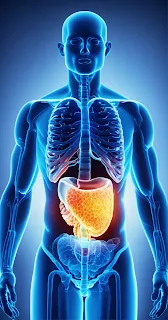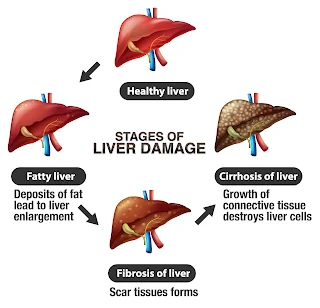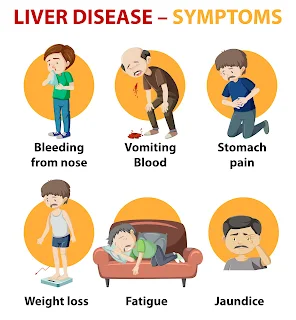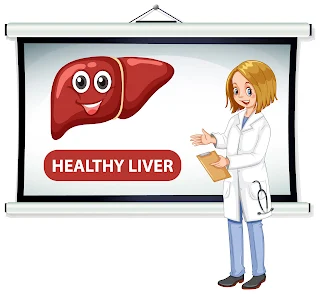Being Healthy with Good Liver
Understanding the Liver: Functions, Importance, Diseases, Causes, Symptoms, Preventions, and Precautions
What is Liver ?
The liver, a vital organ tucked beneath the rib cage on the right side of the abdomen, is often underappreciated despite its crucial role in maintaining overall health. This organ, weighing around three pounds in an average adult, carries out a multitude of functions that are essential to life. Understanding the liver’s functions, its importance, and the risks associated with liver diseases is key to maintaining a healthy lifestyle.The liver is an indispensable organ that plays a critical role in maintaining overall health. From regulating metabolism to detoxifying the blood, the liver’s functions are vast and varied. However, this powerhouse organ is also vulnerable to a range of diseases, many of which can have serious, long-term consequences.
The Liver: A Multi-Functional Powerhouse
The liver is a complex organ that performs over 500 different functions. It’s one of the hardest-working organs in the body, acting as a central hub for processing nutrients, detoxifying harmful substances, producing essential proteins, and regulating the metabolism.
1. Metabolism Regulation
One of the liver's most crucial roles is in metabolism regulation. It helps convert carbohydrates into glucose and stores it as glycogen for later use, maintaining steady blood sugar levels. The liver also metabolizes fats, breaking them down into energy or storing them for future use. Additionally, it plays a significant role in protein metabolism, synthesizing amino acids and producing urea as a waste product.
2. Detoxification and Filtration
The liver acts as the body’s detox center. It filters out toxins from the blood, including alcohol, drugs, and other harmful substances, and transforms them into less harmful compounds that can be excreted. This function is vital for preventing toxic buildup in the body.
3. Production of Bile
Bile production is another essential function of the liver. Bile aids in the digestion and absorption of fats in the small intestine. Without sufficient bile production, the body would struggle to digest and absorb dietary fats, leading to nutrient deficiencies.
4. Storage of Vitamins and Minerals
The liver stores important vitamins and minerals such as vitamins A, D, E, K, and B12, as well as iron and copper. These nutrients are released as needed, ensuring that the body has a steady supply to support various bodily functions.
5. Blood Clotting
The liver produces proteins that are critical for blood clotting. When an injury occurs, these proteins, including fibrinogen, work with platelets to form blood clots, preventing excessive bleeding.
The Importance of the Liver
Given its wide range of functions, the liver is indispensable to human health. Any disruption in its function can have severe repercussions on the body’s overall well-being.
1. Maintaining Chemical Balance
The liver maintains a delicate chemical balance in the body, ensuring that essential compounds are available in the right amounts while detoxifying harmful substances. This balance is crucial for maintaining homeostasis—a state of equilibrium in the body.
2. Energy Supply and Storage
By regulating glucose levels and storing glycogen, the liver ensures that the body has a reliable energy supply, especially during fasting or between meals. This function is particularly important for brain function, as the brain relies heavily on a steady supply of glucose.
3. Supporting Immune Function
The liver also plays a role in the immune system by filtering out pathogens from the blood. Kupffer cells, specialized immune cells in the liver, engulf and destroy bacteria, viruses, and other harmful organisms, providing a first line of defense against infections.
Common Liver Diseases
Despite its resilience, the liver is susceptible to a range of diseases, many of which can have serious health consequences.
1. Hepatitis
Hepatitis is an inflammation of the liver, often caused by viral infections. There are several types of hepatitis—A, B, C, D, and E—each caused by different viruses. Hepatitis can lead to chronic liver disease, cirrhosis, or liver cancer if left untreated.
2. Fatty Liver Disease
Fatty liver disease, or hepatic steatosis, is the accumulation of fat in liver cells. It can be non-alcoholic (NAFLD) or alcoholic (AFLD). While NAFLD is often associated with obesity and metabolic syndrome, AFLD is linked to excessive alcohol consumption. If untreated, fatty liver disease can progress to more severe conditions like cirrhosis.
3. Cirrhosis
Cirrhosis is the result of long-term, continuous damage to the liver. It involves the replacement of healthy liver tissue with scar tissue, which hinders the liver’s ability to function properly. Common causes of cirrhosis include chronic hepatitis, alcohol abuse, and fatty liver disease.
4. Liver Cancer
Liver cancer can arise from various factors, including chronic hepatitis infections, cirrhosis, or exposure to carcinogens like aflatoxins. Hepatocellular carcinoma (HCC) is the most common type of liver cancer, often presenting in individuals with chronic liver disease.
5. Liver Failure
Liver failure occurs when large parts of the liver become damaged beyond repair. This condition can develop rapidly (acute liver failure) or gradually (chronic liver failure). Liver failure is life-threatening and often requires a liver transplant.
Causes of Liver Diseases
Understanding the causes of liver diseases is essential for prevention and management. Several factors can contribute to liver damage.
1. Viral Infections
Viruses, particularly the hepatitis viruses, are a leading cause of liver diseases. Hepatitis B and C, in particular, are responsible for the majority of chronic liver diseases and liver cancer cases globally.
2. Alcohol Abuse
Excessive alcohol consumption is a significant risk factor for liver diseases, including alcoholic hepatitis, fatty liver disease, and cirrhosis. Alcohol damages liver cells, leading to inflammation, scarring, and eventually, liver failure.
3. Obesity and Poor Diet
Obesity, poor diet, and lack of physical activity are major contributors to non-alcoholic fatty liver disease (NAFLD). A diet high in sugars and unhealthy fats can lead to fat accumulation in the liver, impairing its function.
4. Genetic Predisposition
Certain genetic conditions, such as hemochromatosis and Wilson’s disease, can cause liver damage. These conditions lead to abnormal accumulation of iron and copper in the liver, respectively, causing inflammation and scarring.
5. Exposure to Toxins and Drugs
Exposure to environmental toxins, such as industrial chemicals, or prolonged use of certain medications, can lead to liver damage. Some over-the-counter pain relievers and prescription drugs are known to be hepatotoxic (liver-damaging).
Symptoms of Liver Diseases
Liver diseases often develop silently, with symptoms appearing only when the condition has advanced. However, there are some common signs to watch out for.
1. Jaundice
Jaundice, characterized by yellowing of the skin and eyes, is a hallmark symptom of liver dysfunction. It occurs due to the buildup of bilirubin, a yellow pigment produced by the breakdown of red blood cells.
2. Abdominal Pain and Swelling
Pain or discomfort in the upper right side of the abdomen can indicate liver issues. Swelling in the abdomen, known as ascites, can also occur in advanced liver disease, due to fluid accumulation.
3. Fatigue and Weakness
Chronic fatigue and weakness are common in liver disease, as the liver's ability to metabolize nutrients and produce energy is impaired.
4. Nausea and Vomiting
Liver diseases can cause digestive issues such as nausea and vomiting, often due to the liver’s reduced ability to produce bile or detoxify harmful substances.
5. Dark Urine and Pale Stools
Changes in urine and stool color can indicate liver problems. Dark urine may result from increased bilirubin levels, while pale stools suggest a lack of bile production.
Prevention and Precautions
While some liver diseases are genetic or unavoidable, many can be prevented or managed through lifestyle choices and early intervention.
1. Vaccination
Vaccination is an effective way to prevent hepatitis A and B. These vaccines provide long-term protection against these viruses, reducing the risk of chronic liver disease.
2. Healthy Diet
A balanced diet rich in fruits, vegetables, whole grains, and lean proteins supports liver health. Limiting the intake of processed foods, sugar, and unhealthy fats can prevent fatty liver disease. Additionally, consuming alcohol in moderation or not at all can prevent alcohol-related liver damage.
3. Regular Exercise
Regular physical activity helps maintain a healthy weight and reduces the risk of developing non-alcoholic fatty liver disease. Exercise also improves insulin sensitivity, which is beneficial for liver health.
4. Safe Practices
Practicing safe sex, avoiding the sharing of needles, and ensuring proper sanitation can prevent the transmission of hepatitis viruses. For those working with chemicals, wearing protective gear and minimizing exposure can reduce the risk of liver damage.
5. Regular Medical Check-ups
Regular check-ups and liver function tests can detect liver issues early, even before symptoms appear. Early diagnosis allows for timely intervention and can prevent the progression of liver.
Understanding the importance of the liver, the common diseases that affect it, their causes, symptoms, and how to prevent them is essential for maintaining liver health. By adopting a healthy lifestyle, staying informed, and taking proactive measures, we can ensure that our liver continues to function efficiently, supporting our body’s overall well-being.
Thanks for reading,
Have a nice day. 😊











Comments
Post a Comment